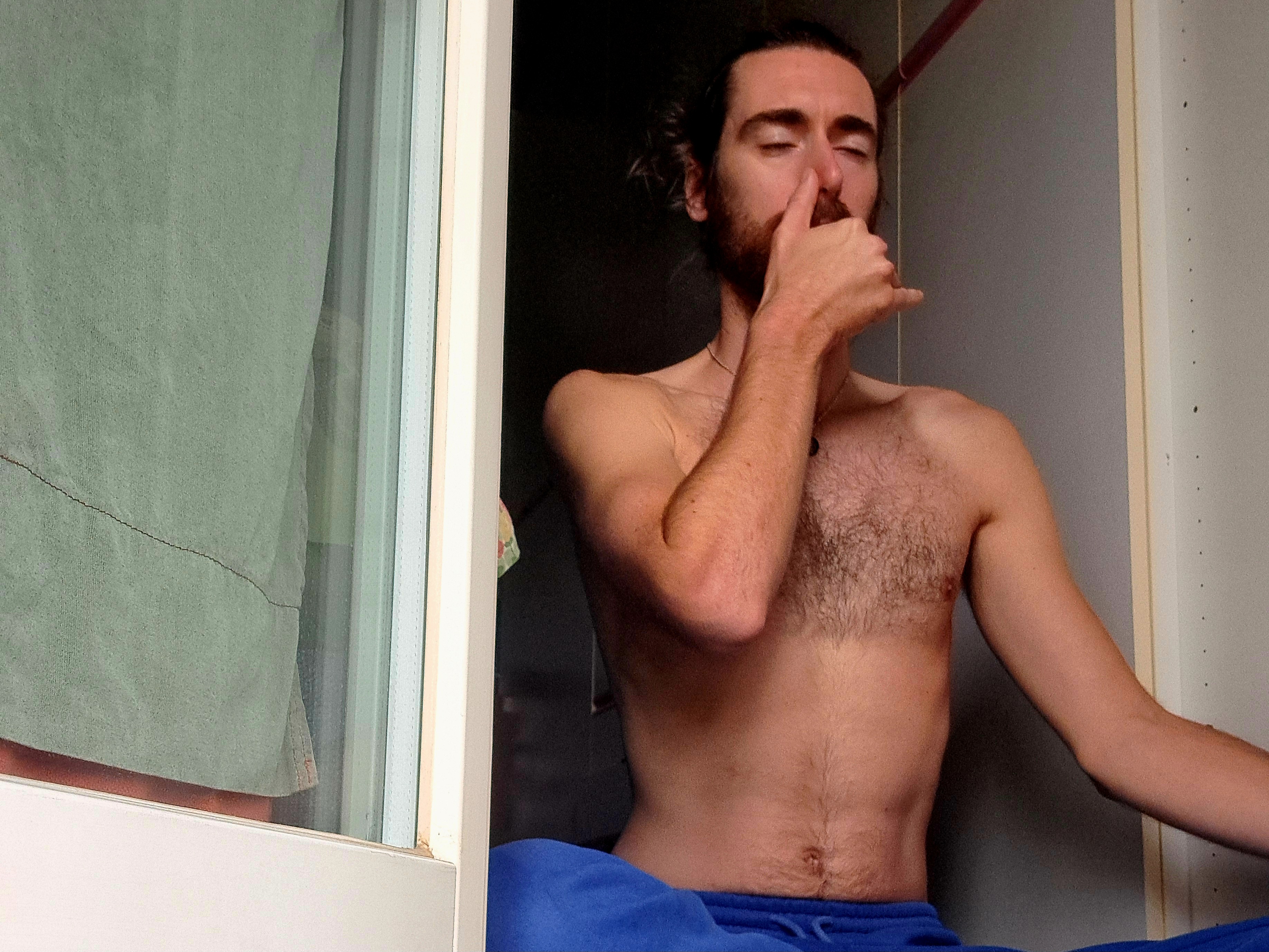Our breathing system is so complex. If we were in charge of how we breath, it’s unlikely we would last 5-minutes. That said, when we do take charge of our breathing by using the practice of breathwork, we can bring balance to our entire system.
Focus on Breath
The breath is vital for our survival. That being said, how we breath has a huge role in our health and wellbeing. By breathing incorrectly we starve the body and mind from oxygen. Lack of oxygen can lead to brain disfunction, lack of clarity, shortness of breath and physical deformities amongst other things. For fact based evidence, check out Breathe by James Nestor.
It is vital we practice breathwork, especially when living in such busy, polluted environments. Many of us have forgotten how to breath. We’ve become a species of mouth-breathers. Mouth breathing pollutes the lungs and allows unfiltered air to pass into the respiratory system. This can lead to problems breathing such as asthma and shortness of breath.
The good new is you can correct incorrect breathing, heal shortness of breath, reduce or remove asthma and increase longevity by establishing a regular pranayama (breathwork) practice. Here are a few techniques to help balance the mind, cleanse the respiratory system and reduce stress and anxiety.
The Perfect Breath
I discovered this when reading Breathe – The new science of a lost art by James Nestor. Simply put, this is a counted breathing techniques that allows maximum inhalation of oxygen for the body and mind, plus the maximum amount of expulsion of carbon dioxide. To perform this technique all you need to do is inhale for a count of 5½ seconds, then exhale for 5½ seconds. You do this exercise by breathing through the nose. This technique brings balance to the entire respiratory system and when practiced on a regular basis, may alleviate certain ailments like shortness of breath and asthma.
Full Yogic Breathing
This technique was taught to me during my time at the Sivananda Yoga Vidya Peetham ashram in India. This is an exercise that can be done led down, sat upright, whilst standing and even when practicing asana (postures). It helps maintain full movement of the diaphragm, allows us to use the full capacity of our lungs which brings in maximum amounts of oxygen and expels maximum amount of carbon dioxide.
To do this exercise, it is best to start led down on your back. Place one hand on the belly and one on the chest. As you inhale, breathe deeply into the belly and feel the rise and expansion of the belly. As you exhale, feel the belly deflate. Do this a few times. Then, as you inhale, breath into the belly, then into the chest. Feel both the belly and the chest expand one after the other. As you exhale, relax the chest, then the belly. Do this a few times as well. Then, as you inhale, expand the belly, expand the chest and send the breath into the collarbone region, rising the collarbone slightly. As you exhale relax the collarbone, the chest and then the belly.
You can think of this as 3 part breathing. First the belly expands, then the chest then the collarbone on the inhale, then relax in reverse order on the exhale.
This is a wonderful technique not only for the breath, but also for focusing the mind and relaxing the body.
Advanced Breathing Techniques
Kapalabhati
Another technique taught to me by the Sivananda ashram.
This exercise expels stale air from the bronchial tubes of the lungs (large tubes that connect to your trachea (windpipe) and direct the air you breathe to your right and left lungs).
If we live in a polluted environment, which lets face it most of us do nowadays, this exercise is fundamental to cleansing the lungs are reducing or curing asthma and shortness of breath.
To do Kapalabhati it is best to be seated in a crossed legged position or on a chair with the ankles crossed. We sit in this way so to keep the energy within ourselves, after all prana means energy or life force and the practice of pranayama is manipulating our energies or life forces.
Kapalabhati is done by pulling the abdomen inwards to force air out through the nostrils, then the belly is relaxed which draws air in through the nostrils. This technique could be called belly pumping. So you breathe deeply to begin, then you inhale deeply, after you have fully inhaled you draw the belly in to force the air out of the nostrils. Once the air is out, you relax the belly to draw the air back in, then you start again. To begin with you would normally do 3 rounds of 10 pumpings or breaths.
After you complete 1 round, take a couple of deep breaths, then inhale and hold the breath comfortably, close the eyes and focus on the eyebrow centre (the command centre). Hold the breath for a count of 30 seconds if possible. Then release the breathe and breathe deeply for a few rounds before starting the whole exercise again.
It’s important to note that you don’t feel any pain, discomfort or strain whilst doing the pumpings or holding the breath. Kapalabhati is designed to calm the body and mind, not stress it. Always seek the guidance of an experienced teacher before practicing a new technique.
Nadi Shuddhi

The final exercise that I will share on the article is called Nadi Shuddhi (alternate nostril breathing).
Although this was another technique taught to me at the Sivananda ashram, I will refer to the teachings of the Isha Foundation this time. There discription is clear and summerised this practice clearly. Isha say: “Nadi Shuddhi is a 5-minute guided yoga routine for positive energy. It balances your energy system (nadis), calms your mind and improves your ability to act effectively. The practice is great for beginners and can be done anywhere: at home, in the office, the park. Try out Nadi Shuddhi and realize the benefits in no time.”
This exercise is simple and effective. The following video explains it perfectly though I will explain in writing for those that prefer it.
Sit in a cross-legged position or on a chair with the spine straight and head centred. Rest the left hand in the lamp with the palm facing upwards. Bring the right hand in front of the face with the palm facing you. For this exercise we use the thumb to close the right nostril and the little finger to close the left. All you will be doing is breathing through one nostril then exhaling out of the other nostril, then breathing in through the same nostril that you exhaled and exhaling out of the opposite nostril. Then you repeat several times.
To begin close down the eyes, breath deeply a couple of times. Breath in deeply, close the right nostril with the thumb and exhale fully out of the left. Inhale fully, close the left nostril with the little finger, open the right nostril and exhale fully. Then inhale through the same nostril, close the right nostril, open the left and exhale fully. This is one round. Repeat this up to 20 times to bring balance into the energy system.
Conclusion
So there you have it, 4 breathing techniques to bring balance to the entire body-mind system. These practice also help to balance the Pranamaya Kosha or energy sheath of our being. With anything new it is often best practice to learn from an experienced teacher. For those interest in learning these techniques, I run weekly pranayama classes in Yatton, North Somerset, UK at The Note Warehouse on Friday evenings 7-8 pm. You can find out more about these sessions here. Alternatively I am happy to offer one to one guidance over the phone/video call, so please contact me directly if you are interest in this.
These practices shared here are exercise I practice regularly and have benefited me greatly. I only share from experience and hope that with sharing these techniques it will bring more balance and harmony to the practitioner. As always thanks for reading.
Om Namah Shivaya
